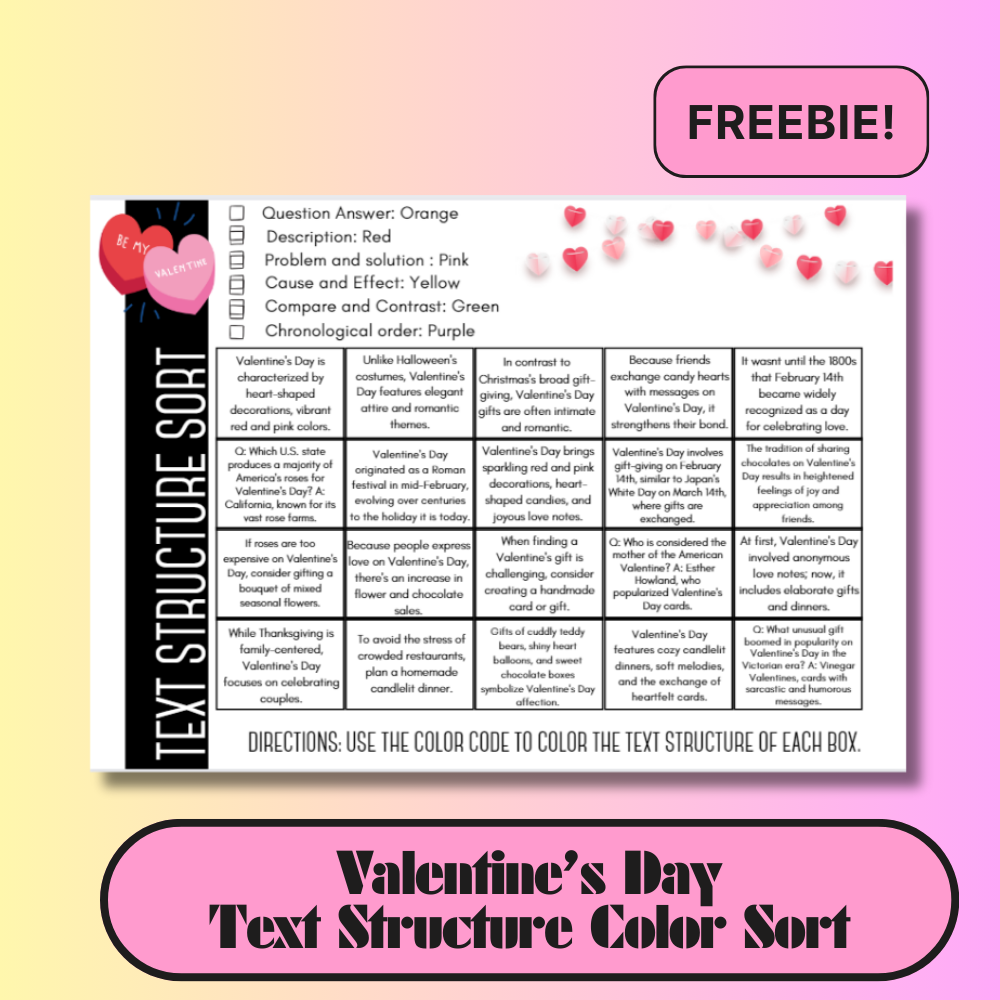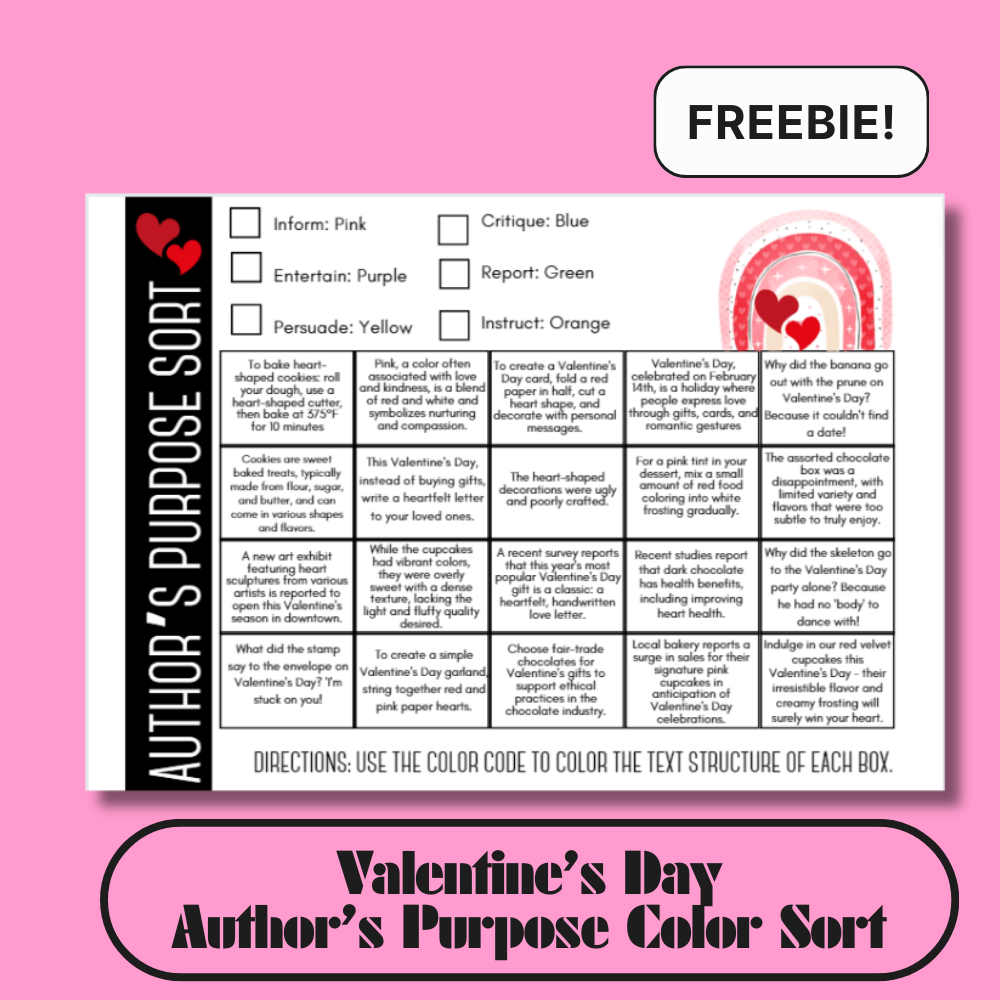Explore Author’s Purpose and Text Structure: Grab TWO Free Valentine’s Day Color Sort Activities for Middle School
Author’s Purpose and Text Structure are two important informational text skills middle schoolers need to master. This Valentine’s Day help your middle schoolers to practice information text skills with TWO free color sorts!
Understanding the structure and purpose of a text is akin to having a roadmap for reading. It’s a crucial skill for students to navigate the world of informational texts, and it becomes even more vital when state testing season rolls around. That’s why we’ve created an engaging and educational resource to make learning these skills not just effective but also enjoyable.
Our free Valentine’s Day-themed color sort activities for grades 5-8 are designed to help students master the art of identifying text structures and authors’ purposes in a fun and interactive way. The Valentine’s Day Informational Text Structure Color Sort and Valentine’s Day Author’s Purpose Coloring Quest are more than just coloring activities; they are tools that blend creativity with critical thinking.
Why Text Structure and Author’s Purpose?
Recognizing text structures helps students understand how information is organized in a passage. Whether it’s cause and effect, compare and contrast, or problem and solution, each structure frames information differently. By identifying these structures, students can better comprehend, retain, and analyze the information presented.
Similarly, understanding an author’s purpose – to inform, persuade, entertain, or express – guides students in discerning the intent behind a text. This skill is pivotal in developing critical thinking, as it encourages students to question and reflect on the content they read.

How It Helps with State Testing
State tests often include a variety of reading comprehension questions that hinge on these skills. Students who can identify text structures and author’s purposes are better equipped to navigate these questions. They’re able to dissect passages, understand arguments, and answer questions more accurately. Our color sort activities provide a hands-on, engaging way to develop these skills, making them an invaluable asset for test preparation.
About the Product
The Valentine’s Day Informational Text Structure Color Sort and Valentine’s Day Author’s Purpose Coloring Quest are designed with middle schoolers in mind. Each resource includes a series of prompts related to Valentine’s Day, where students need to identify the text structure or the author’s purpose. Then, using a color code, they bring the page to life. It’s learning, disguised as a creative and enjoyable activity!
In this colorful learning adventure, students will need our PDF and six specific colors to identify and color-code each author’s purpose. It’s not just a coloring activity; it’s a journey into the heart of reading comprehension and critical thinking, tailored specifically for young learners.
Further Learning Suggestions
To expand on these foundational skills, here are some additional activities:
- Text Structure Scavenger Hunt: Have students find examples of different text structures in newspapers, magazines, or online articles.
- Author’s Purpose Debate: Assign different purposes to students and let them debate on a given topic, defending their assigned purpose.
- Create Your Own: Encourage students to write their own short passages, focusing on a specific text structure or author’s purpose.
- Group Discussions: After completing the color sort activities, have students discuss why they chose specific colors for each prompt, fostering a deeper understanding and appreciation of the skills learned.
- Real-World Applications: Connect these skills to real-world scenarios, like analyzing advertisements (author’s purpose) or comparing news articles (text structure).

Our Valentine’s Day color sort activities are more than just a fun classroom exercise; they’re a stepping stone to mastering crucial reading comprehension skills. By integrating these activities into your classroom, you’re not just preparing students for state tests; you’re equipping them with lifelong literacy skills.
And don’t forget, for more engaging and educational resources, be sure to follow our Teachers Pay Teachers store. Let’s make learning an adventure that students look forward to every day!
Check out this ultimate teaching guide to using novels: How to use novels in the middle school classroom (toobookedup.com)